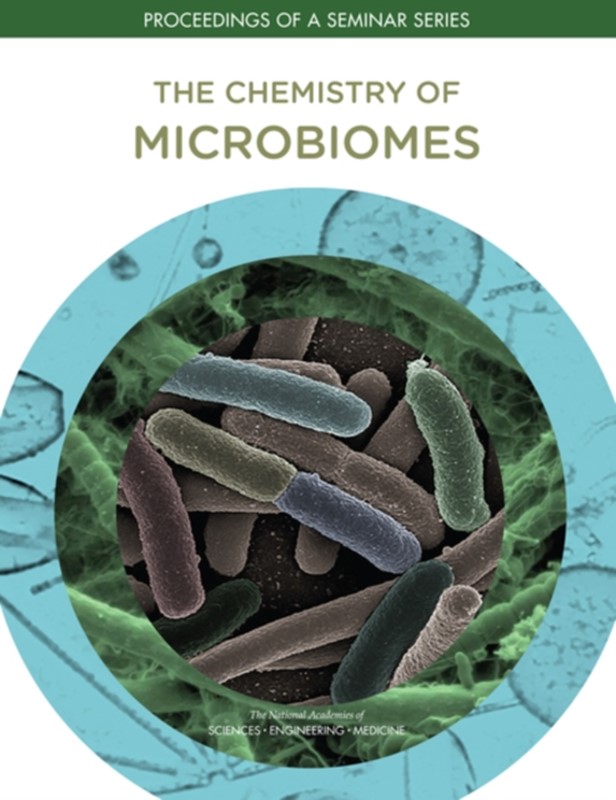The Chemistry of Microbiomes - Board On Chemical Sciences And Technology - Bog - National Academies Press - Plusbog.dk
The 21st century has witnessed a complete revolution in the understanding and description of bacteria in eco- systems and microbial assemblages, and how they are regulated by complex interactions among microbes, hosts, and environments. The human organism is no longer considered a monolithic assembly of tissues, but is instead a true ecosystem composed of human cells, bacteria, fungi, algae, and viruses. As such, humans are not unlike other complex ecosystems containing microbial assemblages observed in the marine and earth environments. They all share a basic functional principle: Chemical communication is the universal language that allows such groups to properly function together. These chemical networks regulate interactions like metabolic exchange, antibiosis and symbiosis, and communication. The National Academies of Sciences, Engineering, and Medicine's Chemical Sciences Roundtable organized a series of four seminars in the autumn of 2016 to explore the current advances, opportunities, and challenges toward unveiling this "chemical dark matter" and its role in the regulation and function of different ecosystems. The first three focused on specific ecosystems—earth, marine, and human—and the last on all microbiome systems. This publication summarizes the presentations and discussions from the seminars. Table of ContentsFront Matter1 Introduction2 Illuminating the Microbial Dark Matter Beneath Your Feet: Microbial Catalysis in the Terrestrial Subsurface - Kelly C. Wrighton, Rebecca A. Daly, and Michael J. Wilkins3 Life in High-Temperature Environments: Modern-Day Analogs of Early Earth Still Relevant Today - William P. Inskeep4 Advancing Our Understanding of the Chemistry of Soil Microbiomes - Trent R. Northen, Zheyun Zhang, Jian Gao, Tami Swenson, and Yasuo Yoshikuni5 Envisioning a Chemical Metaproteomics Capability for Biochemical Research and Diagnosis of Global Ocean Microbiomes - Mak A. Saito, Chip Breier, Mike Jakuba, Matthew McIlvin, and Dawn Moran6 Chemical Ecology: The Language of Microbiomes - Mark E. Hay, Deanna S. Beatty, and Frank J. Stewart7 Organic Nutrient Chemistry and the Marine Microbiome - Daniel J. Repeta and Rene M. Boiteau 8 Digitizing the Chemistry Associated with Microbes: Importance, Current Status, and Opportunities - Pieter C. Dorrestein9 Deciphering the Chemistry of the Human Gut Microbiome - Emily P. Balskus10 Engineering the Microbiome for Human Health Applications - Timothy K. Lu, Mark Mimee, Robert J. Citorik, and Karen Pepper11 Talking with Molecules: Marine Bacteria and Microalgae - Mohammad R. Seyedsayamdost12 Genome-Scale Metabolic Modeling and Its Application to Microbial Communities - Jennifer L. Reed13 Epilogue After the Panel DiscussionsAppendix A: Seminars AgendasAppendix B: Biographic Sketches of Seminars Planning Committee and Seminars SpeakersAppendix C: Seminars Attendees

















































